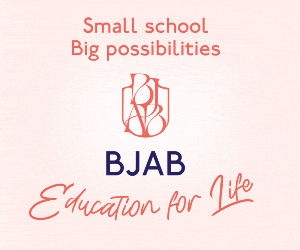The idea of a universal language, or to give it the correct name, auxiliary language, is nothing new. Inventors of auxiliary languages, starting in the late 19th century with Volapük and continuing with Esperanto, often spoke several European languages at least, and tended to make the grammar inaccessible at best.
EASY TO LEARN
Although relatively unknown outside the field of linguistics, a Belgian diplomat called Arturo Alfandari perfected yet another auxiliary language, but this one had a twist – it was easy to learn. Alfandari, as his name suggests, was born an Italian. He served as a cipher officer for the Italian High Command during the First World War, after which he settled in Belgium. He went on to become a diplomat for the Belgian government and ran a successful export business. When he wasn’t occupied with these things, he found the time to learn six other languages – and to create an entirely new one. His new language, Neo, was essentially a subset of Esperanto but he had striven to make it easier and more accessible. He was also at pains to point out that Neo be used “… when [the] two mother tongues differ too greatly for mutual comprehension,” and that “in each country, the national language is sovereign, having nothing to fear from a ‘second language’ like Neo.” It is safe to assume that he learned a lot from his time in Belgium. The motive behind the huge amount of effort he put into his new language was honourable: “Whether you are Flemish or Walloon, white or black, Americans or Russians, you all want peace. To make an attempt to understand and support each other.” Alfandari tried very hard to ensure the grammar was as simple as possible. To his credit, the entire grammar of Neo is explained on pages 12 and 13 of his 402-page study guide and dictionary Rapid Method of Neo International Auxiliary Language. A quick Google search will reveal copies of his book for around.
CONJUGATION
Verb conjugations in Neo are enough to make a student of even French, German or Spanish whoop with joy. All verbs, with no exceptions, are conjugated in the same manner. There are no surprises when it comes to the gender of objects, as there is none. Everything, as in English, is gender-neutral language. The most striking feature of Neo is the obvious bias towards Romance languages in its construction, appearing to be a healthy mix of Spanish, Italian, French and Latin. Anyone with even a basic grasp of any of these tongues should have no problem learning Neo. The main problem with Neo, as with so many other constructed languages, is that people would seem to prefer a language with a greater user base – practise makes perfect after all. In an interview with the US magazine LIFE upon the launch of his language in 1961, Alfandari said: “Mi tralir krei no nur un simpla mo an un bel linguo.” After 25 years of research and 1,300 pages of grammar and vocabulary, he was ready to present the world with its own brand new lingua franca. His sentiments (“I have tried to create not only a simple but a beautiful language”) may have been altruistic enough but, as LIFE pointed out: “Alfandari and a friend are currently the only two people in the world who speak it.”
SUPPORT FOR NEO
With a severely limited user base, public reaction was lukewarm. Alfandari received letters of support and praise, some even written in Neo; it appears that his claims that Neo could be learned in ten days, and complete fluency in the lexicon of 60,000 words achieved in around three months, had some foundation. Alfandari struggled to keep his language alive. Even though it was touted by the International Language Review as a simpler, more accessible language than Esperanto, and promoted by his newly formed group for ‘Neists’, the Friends of Neo (Amikos de Neo), it still didn’t catch on. He eventually formed the Neo Academy, in the hope of further promoting the language, but it was already too late. A philanthropist, and driven by a passion that consumed nearly a third of his life, when Alfandari died in 1969, Neo died with him.







